- The key to successful EV road trips involves planning ahead by using a helpful app like Chargeway.
- Charging infrastructure needs to grow to encourage more people to trust the EV ownership experience.
- Misinformation continues to spread without proper pushback from educated consumers and industry experts who know the nuances of EV charging access.
If the electric vehicle market is going to change the way people drive, the EV charging experience needs growth and better marketing. While it is possible to travel across the country in an EV, drivers still worry about the quality and quantity of available public chargers.
Fortunately, 2024 is expected to be the year when EV charging becomes easier for consumers — especially with the impending shift to the J3400 standard. However, until EV charging stations become as ubiquitous and speedy as filling up at a gas station, there will continue to be drivers who refuse to consider fully electric vehicles.
ADVERTISEMENT
The Paradigm Shift From ICE to EV
Transitioning from a vehicle with an internal combustion engine to an electric vehicle involves a handful of paradigm shifts, especially related to fueling.
The Ease of Gas Station Fill-Ups
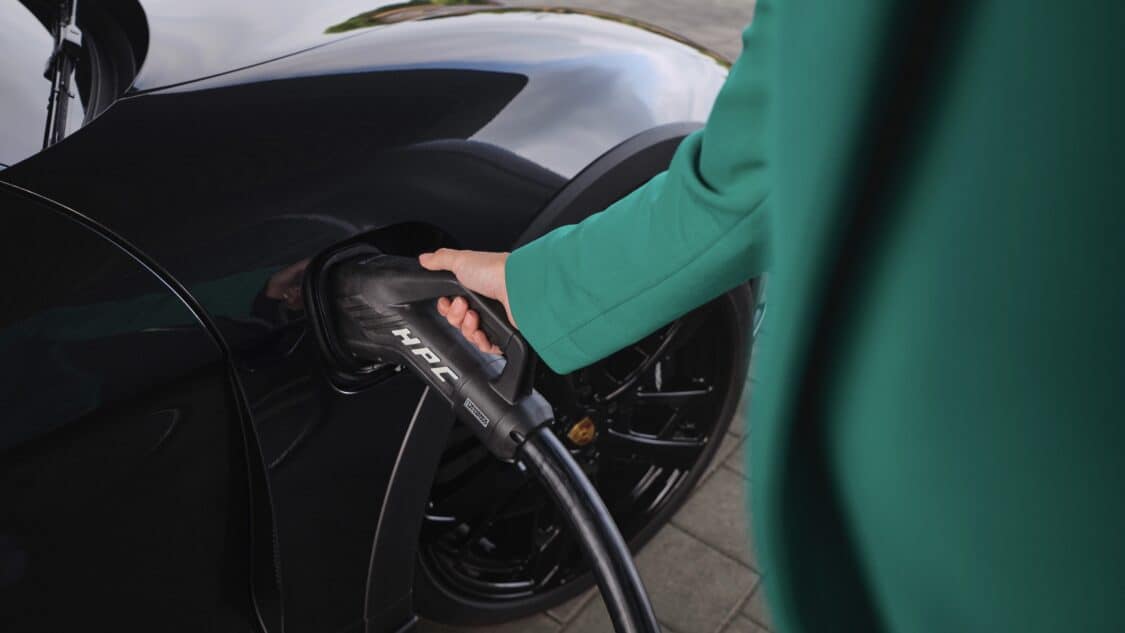
Drivers with ICE vehicles can fill up at any gas station, usually in about five to ten minutes. Occasionally, gas stations have broken pumps, but the same station should have functional pumps — or there’s a gas station across the street that works perfectly fine. Planning a road trip in an ICE vehicle is easy since you never have to worry about finding a gas station, especially as interstate highways have large signs that tell you what stops have them.
The Convenience of Charging at Home
“Fueling” an EV involves thinking differently about the fueling-up process. A benefit of owning an EV involves being able to refuel — or charge up, really — at home throughout the night. Using an at-home Level 2 EV charger costs pennies per mile and is incredibly convenient. EV drivers with a typical commute do not charge every night, just like ICE vehicle drivers do not stop at a gas station every day.
The Key to EV Driving: Planning Ahead
The essential aspect to successfully filling up your EV’s charge is planning ahead. Level 2 EV charging usually takes several hours, so EV owners must plan ahead if they have to travel beyond the current range in their EVs. It can be tough to make a spur-the-moment road trip if you haven’t filled up and you don’t have a DC fast charger nearby.
ADVERTISEMENT
Planning for a Road Trip
EV road trips require planning. Because Level 3 DC fast-charging stations aren’t everywhere, EV drivers must plan for stops within their range. In some situations, EV drivers have to go out of their way to find a DC fast-charging station. Fortunately, this need is changing as more fast-charging stations pop up around the country.
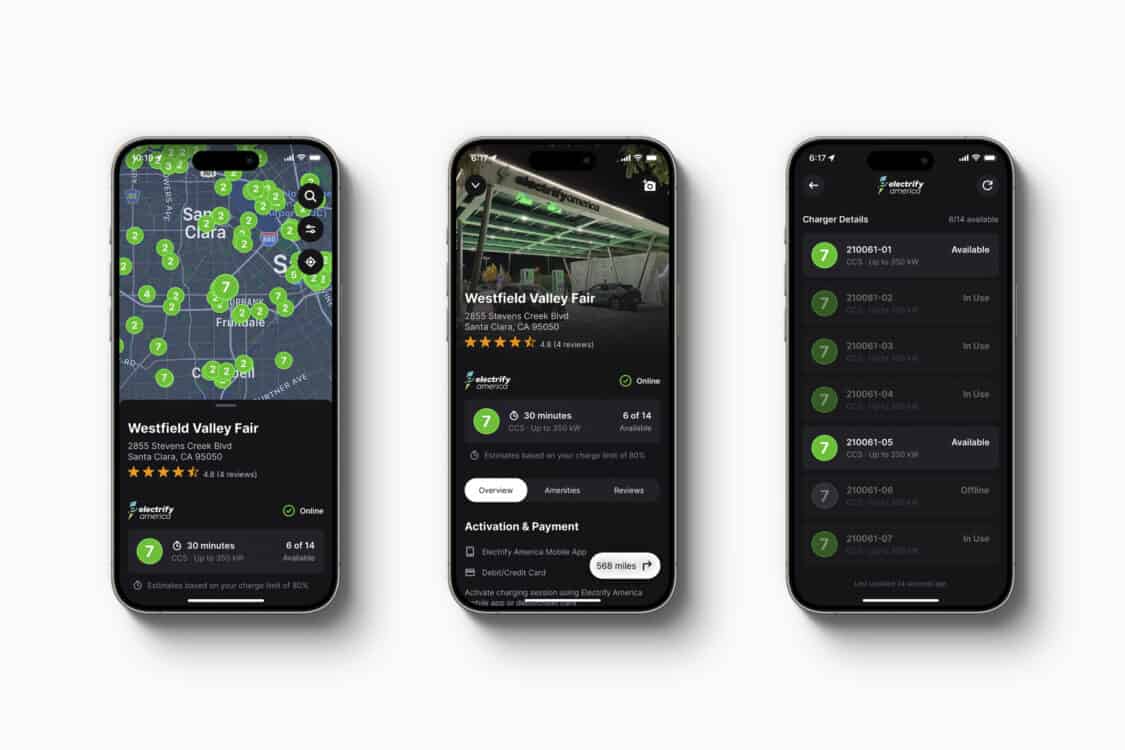
Using the Chargeway app makes planning ahead for the EV charging experience more convenient, as the app shows precise locations, pictures of the station, and the status. Beyond just providing an EV charging stations map, the app reports each station’s functionality — basically, whether it is being used or if plugs aren’t functional.
Because charging stations still have occasional downtime, EV drivers need to have backup plans. Again, this is changing as more stations are built. Unfortunately, the most common backup plan is a Level 2 charger, which only adds 25 to 50 miles per hour of charging. EV drivers might plan a hotel stop at a Level 2 charger, or they might sit for an hour — enjoying a meal, time with family members, or some phone scrolling, then make their way to a nearby DC fast charger to top off.
Tesla Superchargers Changing the Game
In 2025, the Tesla Supercharger network is set to open to all OEMs. Current non-Tesla EV drivers will need an adaptor like the Magic Dock to use the network, while all-new 2025 and late 2024 models will come with the new J3400 charging system. They’ll be able to use the Tesla network along with the non-Tesla network like Electrify America, ChargePoint, Blink, and the rest.

This massive change is expected to make the EV charging experience more reliable and convenient. EV drivers with vehicles like the Ford Mach-E, Kia EV6, or VW ID.4 will be able to access about 12,000 more fast-charging plugs when the calendar changes to 2025. As a driver of a 2023 Kia EV6, I’m looking forward to having more options, especially as I use my EV6 for road trips.
ADVERTISEMENT
What I’ve Learned as an EV Owner

I usually charge my EV6 at home using my Enel X Way Juicebox. I bought it in July 2021 to fill up our Jeep Wrangler 4xe plug-in hybrid — which we still have. I usually charge the EV6 once per week, while my husband charges the 4xe nightly. On the nights I need to charge, my husband will charge the 4xe in the evening — from 7 p.m. until 9 p.m., then I plug into the Juicebox EV charger overnight.
We regularly take the EV6 from our home in West Michigan to South Bend, Indiana, where our son attends college. The nearest fast charger is at a shopping mall in nearby Mishawaka, Indiana, and we always have to charge to get back home. The charging speed depends on the outside temperature, and we can usually walk two laps around the mall if the weather is above freezing. So far, we’ve never had to wait for one of the four ports, and they’ve always been functional.
I’ve also got an Electrify America DC fast-charging station less than a mile from my home. This convenience lets me charge up my car in 18 minutes or less if I need to hit the highway quickly.
Plug Types and Power Levels
As EVs are still in their infancy, the move to a standard charging system has created a few headaches. Early EVs like the Nissan Leaf and Chevy Bolt are slow to charge, even at fast-charging stops. Drivers who don’t realize their vehicle’s charging limits can slow down a line of waiting EVs. Car sales teams don’t help the matter either, as many don’t know anything about EVs, so they can’t teach EV drivers how to charge publicly.
The Ease of Using the Chargeway Color and Number System
Understanding EV charging plugs and power is easy with the Chargeway app. It simplifies EV charging by using a simple color and number system. Unfortunately, not enough EV drivers use the app, and charging stations don’t rely on the simple color and number system. Instead, they use numbers like 150 kW or 350 kW — and EV drivers often don’t know what those numbers mean and how their vehicles respond to them. Adding color and number stickers to corresponding charging stations could help speed up the lines at busy charging stops.
For example, if you have a Nissan Leaf or Chevy Bolt, the 350 kW charger does nothing to speed up the time at a charging station. The 350 kW does help drivers with fast-charging architectures like Porsche, BMW, Rivian, and most Kia and Hyundai EVs.
A 150 kW charging station is ultimately too slow to effectively charge the Porsche, BMW, Kia, and Hyundai EV models. Meanwhile, if you drive a Volkswagen ID.4, the best spot for charging is a 150 kW charger, because the ID.4 has a slower charging architecture (118 kW) than the Kia EV6 and Hyundai IONIQ 6 (which have 235 kW charging speeds).
ADVERTISEMENT
Greater Efficiency with the J3400 Charging Standard
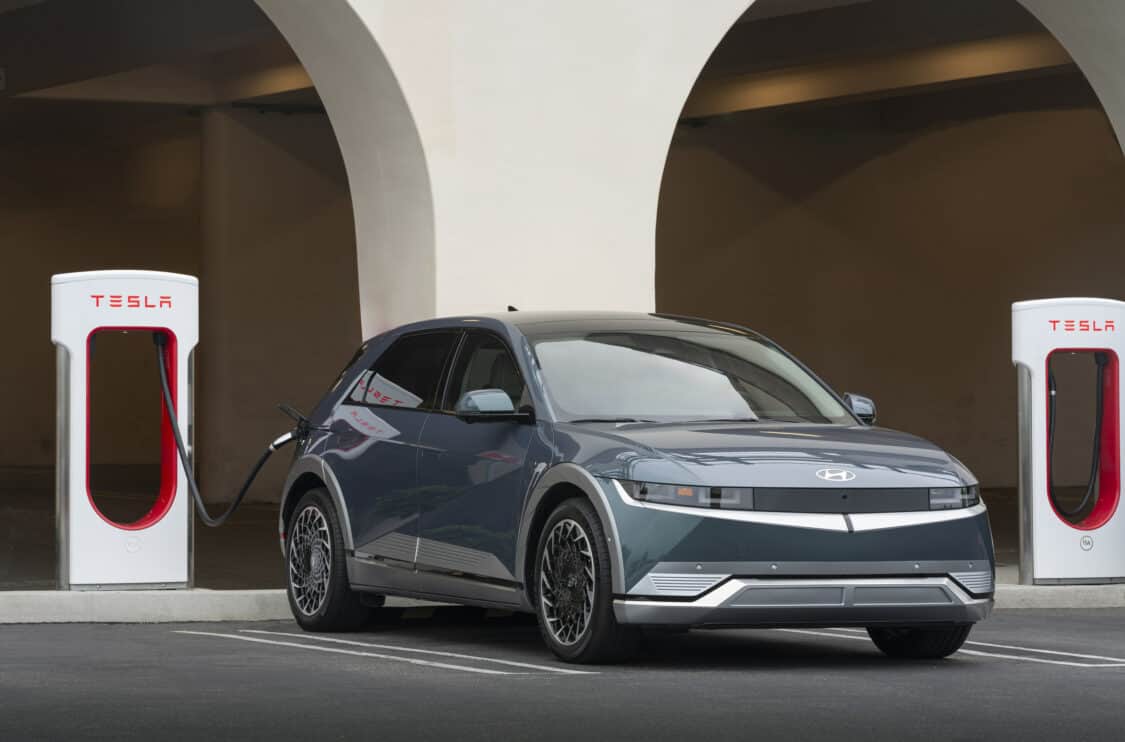
The new J3400 charging standard, based on the current North American Charging Standard used in Tesla EVs, will make charging more efficient. The typical Tesla Supercharger station is stocked with 250 kW plugs since a Tesla Model Y has a maximum charging speed of 210 kW, which will be beneficial for the newest EVs from most OEMs.
How OEMs Can Improve the EV Charging Experience
Now that OEMs will have a single charging standard, it’s time to make charging speeds consistently fast so everyone can get in and out of charging stations in less than 20 minutes.
Consider the technology used in the 2024 Porsche Taycan — the new EV can charge at speeds up to 320 kW, which is 50 kW faster than previous model years. New Porsche Taycan owners can fill their 93.4 kWh battery pack from 10% to 80% in about 18 minutes, especially if the charging station can maintain a 300 kW charging speed.
A common charging standard and speed will make explaining EV ownership easier for dealerships. When I bought my Kia EV6, my salesman knew nothing about charging it. The dealership had a charging station, and he had no idea how to use it. While I know some sales teams are trained in EV sales, I’m certain my experience wasn’t unique.
No one at a car dealership needs to explain how to fill up a gas-powered vehicle, and OEMs have made it even easier by including the arrow by the gas gauge. But it wasn’t always that way. While gas stations have been around for over 100 years, it wasn’t until just a few decades ago that they went from full-service to self-serve with pay-at-the-pump. EV charging will inevitably follow suit, with useful port and speed standardization.
ADVERTISEMENT
Educating the Public
Too much misinformation exists about EVs and charging EVs, and it’s too bad. Unfortunately, politics have also gotten in the way, and it makes things difficult for people to even consider test-driving an EV. Misinformation and education affects everyone — even EV owners who pride themselves on their zero-emissions vehicles.
Benefits Beyond the Tailpipe

The benefits of EV driving should involve more than switching from gas to electric. Driving an EV is fun thanks to the immediate acceleration and no transmission pause. While they are quiet, they still make some noise. The EV6 has a pleasant hum, making it easy to hear my vehicle’s stereo and have conversations — even with backseat passengers.
While I still love the sound of a Mustang with a V8, I know the noise is enhanced when the engineers calibrate the exhaust. Let me repeat that — in an ICE vehicle, exhaust noises are engineered. The same V8 noises can be engineered in an EV, but if you’ve ever driven a Mustang Mach-E in Unbridled mode or a Kia EV6 GT in GT mode, you quickly realize that the sensational push of the torque makes the engineered exhaust noise completely unnecessary.
EV Driver Demographics
Educating the EV driver might require changing the teacher.
According to research from 2020, the typical EV owner is a middle-aged white man with a college education and an annual income over $100,000. Car and Driver magazine reports that the typical EV driver drives only 5,300 miles annually. When it comes to Tesla drivers, research shows that 74% are male, while 81% of them are white. Most own their own homes, and many do not have children at home.
As a woman who drives an EV over 15,000 annual miles, I often feel like I’m underrepresented and underestimated in the EV world. I attended a local EV meet-up and was patronized by a handful of male Tesla drivers. The group of male drivers was chatting about a SpaceX rocket launch, and I asked a question about the location of the launch. The patronizing response I got began with, “There’s a man named Elon Musk. He owns a rocket company.”
If this is the way that Tesla owners talk to non-Tesla owners, it’s easy to see why people are turned off from owning EVs. I don’t know if my encounter was a common one, but it certainly left an impact on me, and I haven’t returned to that EV meet-up group. Growing EV charging confidence involves allowing EV driver demographics to grow.
ADVERTISEMENT
Time to Change EV Teacher
Building the EV market means reaching out to drivers who aren’t white, over 50, and empty-nesters. EV drivers should be able to live in apartments, rural areas, condo associations, and mobile home parks. Their charging needs must be supported through public or private charging stations, like the public DC fast-charging stations sponsored by Madison Gas and Electric around Madison, Wisconsin.
Teaching How EVs Fit All Demographics
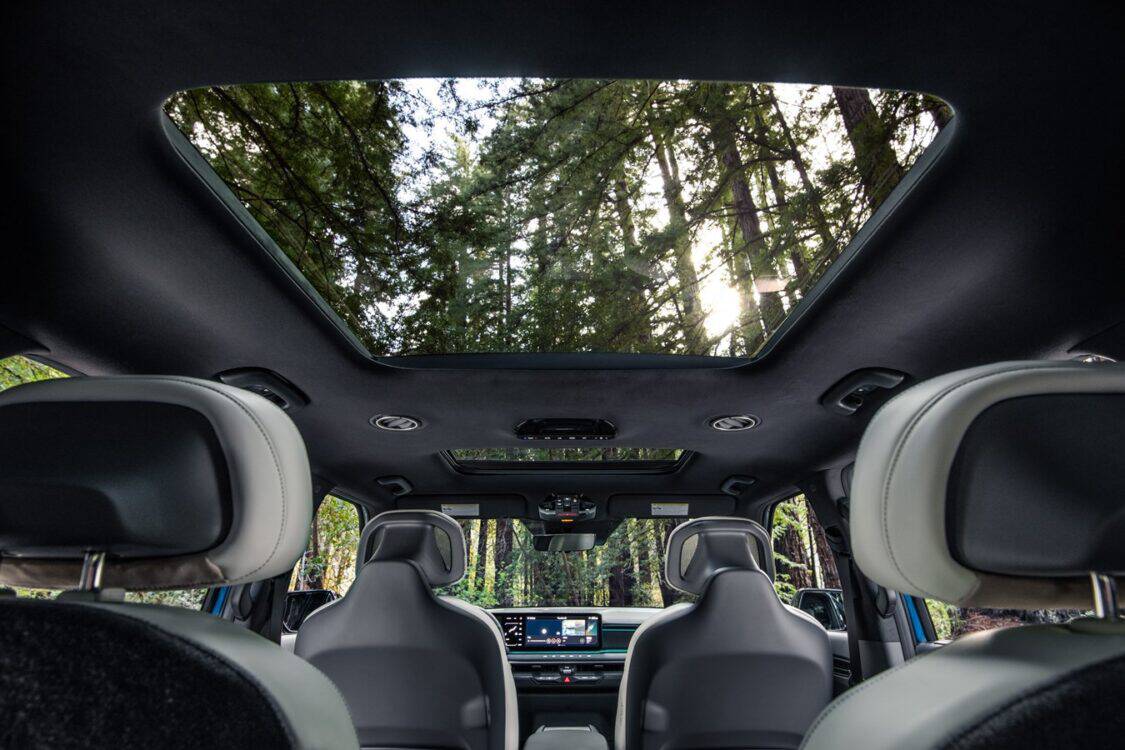
My EV6 has a big backseat and a lot of room for groceries and sports gear. It even has a V2L port, which any travel sports parent would love to use for grilling, heating, or entertainment while on the road. EVs are exciting and not just for one demographic. Maybe the Kia EV9 Super Bowl ad (about the ice skater visiting grandpa) will show how families can benefit from the SUV’s size, range, and generator capabilities.
Stopping the Misinformation
It’s time to change the voices that talk about EV charging. A few weeks ago I heard Steve Kornacki (the khaki pants guy) sharing an incident he had while renting an EV. All he did was complain about how much time it took to charge his rented EV. He clearly did not know about DC fast chargers, and his negativity went out into the public without anyone stopping to correct him.
I’ve seen the same misinformation from the local news in my community. One Sunday morning program involves a state politician talking about how a soccer mom with an EV would always be late to school and soccer practice pickups because she would be too busy charging her EV. I wrote a letter to my local TV station about that collection of lies — but haven’t heard anything back. When the loud voices on the airwaves don’t know the truth, all the public gets is misinformation and EV horror stories.
Building Consumer Trust
The problem with any new technology is that bad news tends to get reported first. Fear gets our attention. Consider the fear that arose when electricity was in its infancy. In the 1890s, people boycotted electricity, and they were afraid their children would be harmed by it. People thought it was dark magic and that it would seep onto the floor of their homes. Thomas Edison scared the public about the dangers of electricity, especially after workers in his lab invented the electric chair! Fortunately, trust in electricity grew, and now it’s something we tend not to think about unless it stops working.
The Quiet Spread of EVs
The same can happen with EVs. The naysayers are noisy, but more people are quietly realizing that EV driving is joyful and relatively easy. United States EV sales have surpassed the tipping point. Non-EV drivers are seeing more EVs in the charging stations at Walmart and on all types of roads. Seeing EV drivers trust their EVs will improve overall consumer trust.
Building Trust Through Brand Recognition

Seeing more EV charging stations built around the country will improve consumer trust. Most of my EV charging experiences have been with Electrify America stations. Because those are what I use most, I generally trust them. My husband uses public ChargePoint charging stations with our Jeep 4xe, so he trusts those. I’m certain the same can be said for Tesla drivers and Tesla Superchargers.
I’m looking forward to the time when I can plug into a charging station and not have to use an app to activate the charger. Tesla charging stations connect automatically to Teslas, and the VW ID.4 will soon offer the same convenience at Electrify America stations. The seamless and reliable EV charging experience will make EV drivers say more good things about EV ownership. Word of mouth will spread, and more people will learn how easy it is to charge an EV.
Simple Steps to Grow Consumer Confidence
The federal government could improve consumer trust by adding EV charging information to the signs along the interstate highways. EV drivers would appreciate seeing Electrify America or Tesla Supercharger signs next to McDonald’s, Love’s, and Hampton Inn signs. Non-EV drivers would see that EV charging matters.
As more EV drivers say good things about their EVs and their charging experiences, consumer trust will grow — just like the early days of electricity, elevators, and Ford Model Ts.
ADVERTISEMENT
Infrastructure Development Through Private and Public Collabs
The federal government has been busy awarding grants for all things EV. Public and private money is changing EV infrastructure, but it takes time.
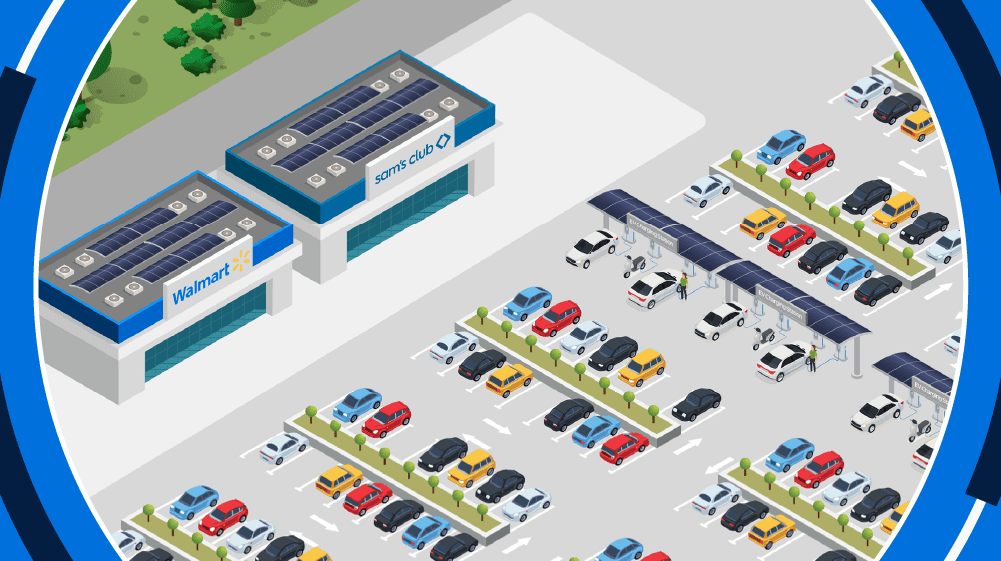
Companies like Walmart, Starbucks, and Meijer are adding DC fast-charging stations around the country. Brands like Hilton, Marriott, and Choice Hotels are now becoming hotels with EV charging available, adding Level 2 charging stations to key locations. Entire communities are adding streetside charging, and colleges are doing the same.
Changing How People Fuel Their EVs
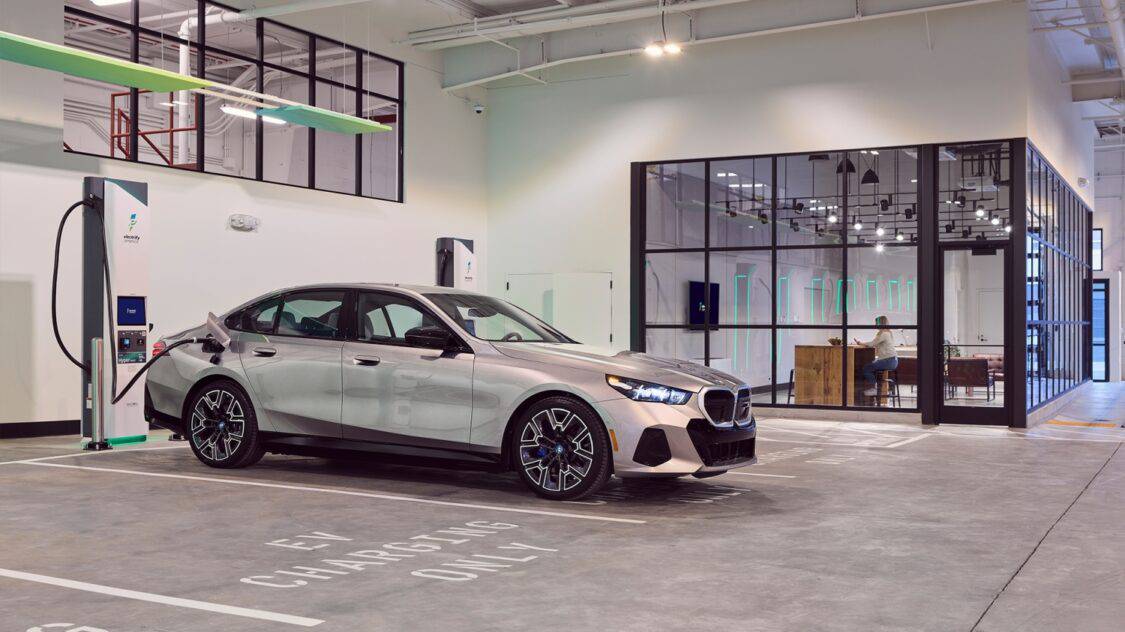
Charging infrastructure is changing the way people fuel their vehicles. Electrify America just opened an indoor charging station in San Francisco, California. This posh destination charging station has comfortable seating, snacks, and restrooms. It offers convenience for city dwellers who need public charging, and it creates a relaxing environment for a pause while on the road. I can only imagine how wonderful it would be to have an indoor public charging station in the middle of a snowstorm in Michigan. Someday, it could become a reality!
As more drivers see charging stations popping up in convenient locations, consumer confidence will grow. Collaborations between government and industry will make it easier for companies to add charging stations in key locations. The ultimate goal is to make EV charging more user-friendly.
ADVERTISEMENT
The Process of EV Charger Installation
My daughter is a civil engineer at a firm that works with Michigan highways. She is involved in choosing where to place DC fast-charging stations in the Mitten State. The process requires researching traffic patterns, distances between charging stations, and access to electricity and parking.
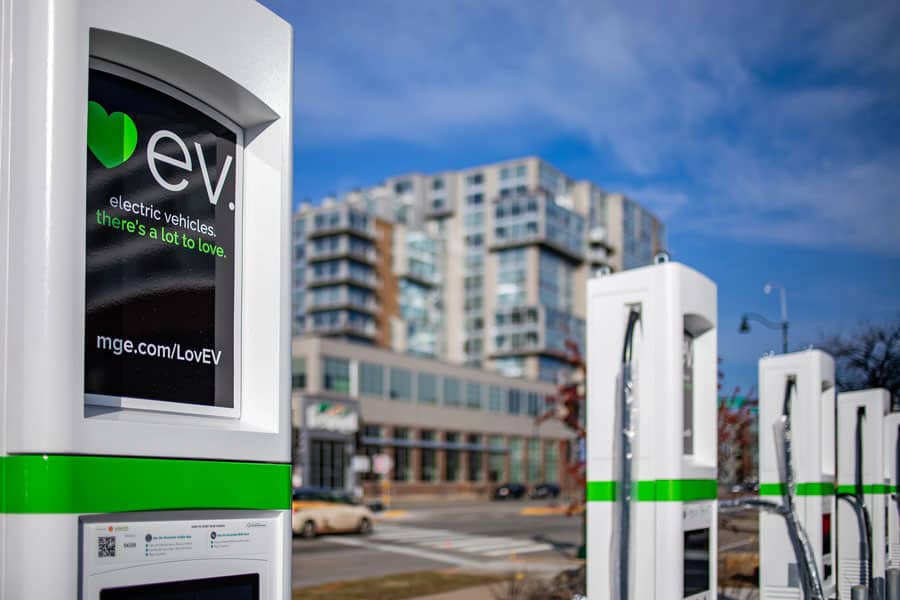
What it doesn’t require is commercial fuel tank installation and inspection, diesel exhaust fluid dispensers, fire suppression systems, piping sumps, spill buckets, and vapor balance and recovery systems. As more companies install EV charging stations, the process should become more efficient — thus making EV charging itself more efficient.
Infrastructure development also needs more reliance on renewable energy. As an EV driver, I love that my vehicle does not use gas, but electricity in Michigan mostly comes from natural gas and limited renewable resources. So, according to the EPA, my EV has an emissions footprint from the “upstream” — the power source used to deliver electricity to my garage, but the footprint is less than half of what a typical gas-powered vehicle creates just from exhaust emissions. As much as I’d like to say I have a true zero-emissions driving experience, I can’t.
Making EV driving a true zero-emissions experience would improve consumer confidence, but it will take time for states and utility providers to make the change to renewables. This process also involves removing misinformation and dispelling fear to educate the public on the benefits of getting energy from new sources.
The Future Outlook
The potential growth and positive impacts of EV fueling will improve the quality of life for EV drivers. If enough people recognize the positive impact and joyful driving experience of EV ownership, we could see a more sustainable future with less reliance on petroleum.
Shifting who is teaching others about EVs and the EV charging experience, as well as encouraging collaboration between public and private stakeholders, could build consumer trust and drive a paradigm shift regarding EV fueling. It’s important to focus on what’s good about EVs and what works with EV charging to help reluctant drivers consider making the change.
ADVERTISEMENT

FEATURE IMAGE: MERCEDES-BENZ
FTC: We use income-earning auto affiliate links. Learn more.


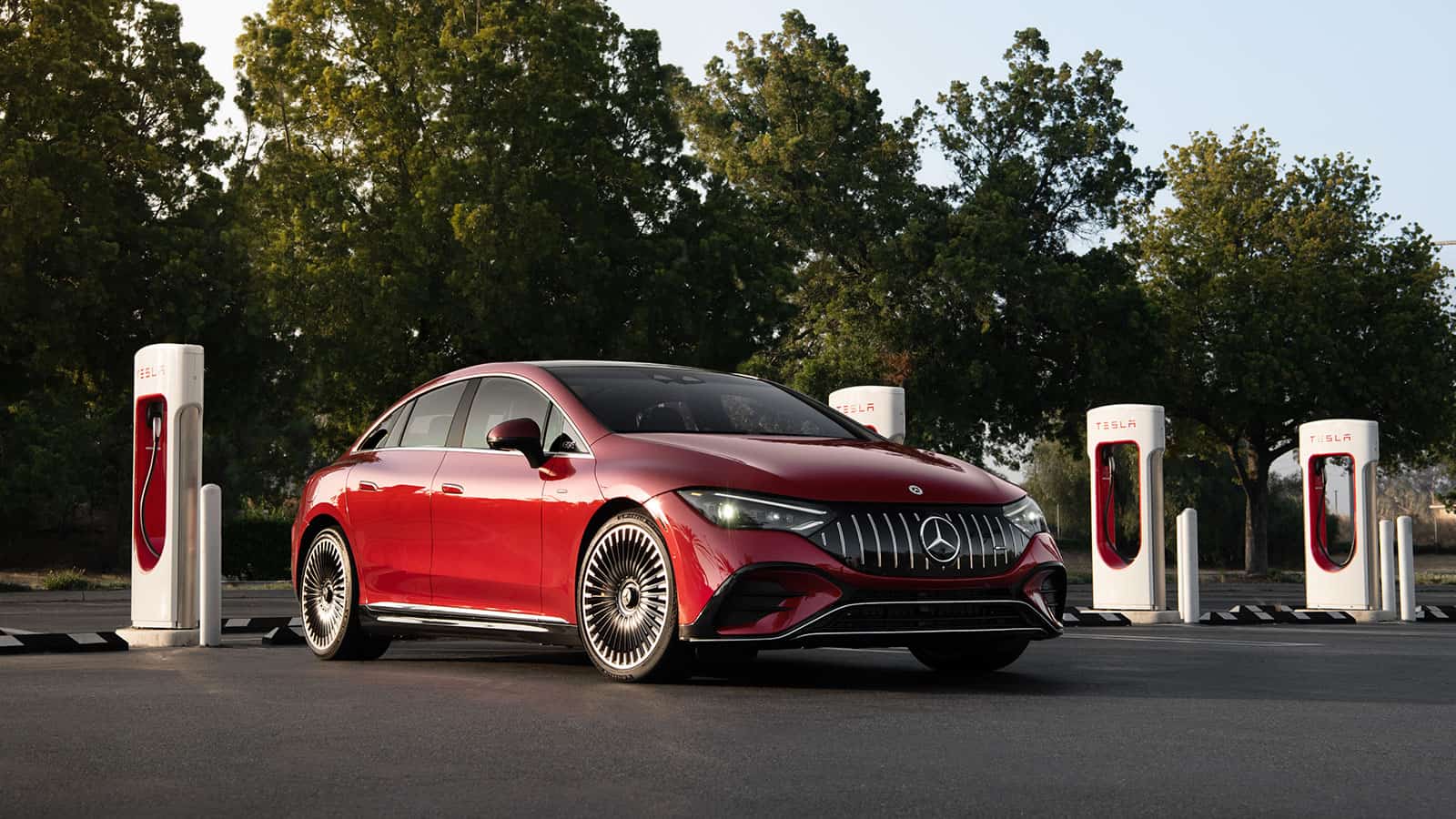
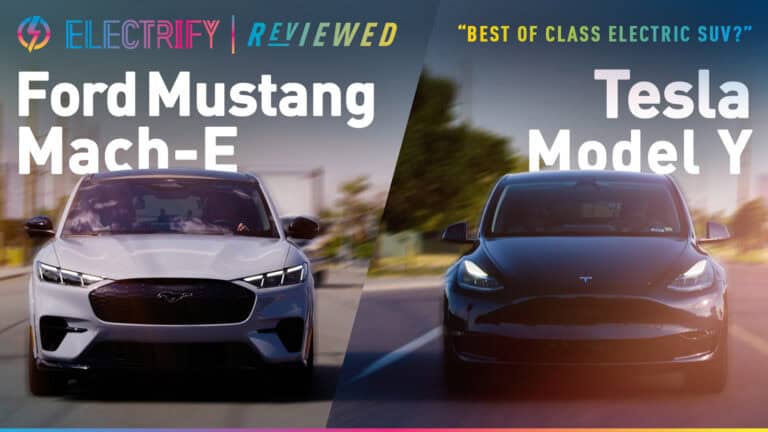
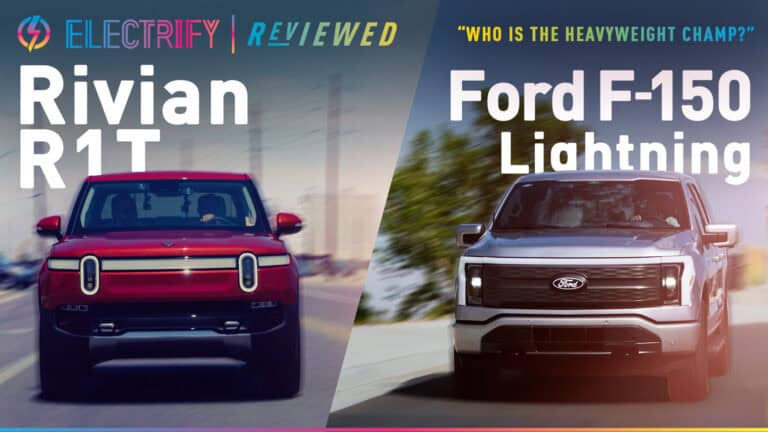
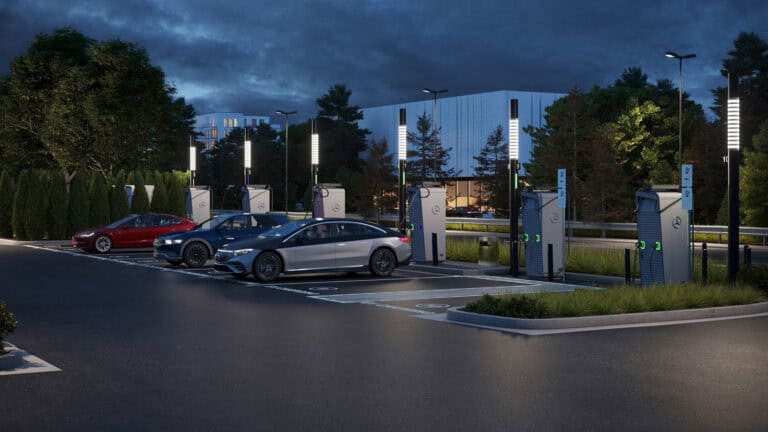
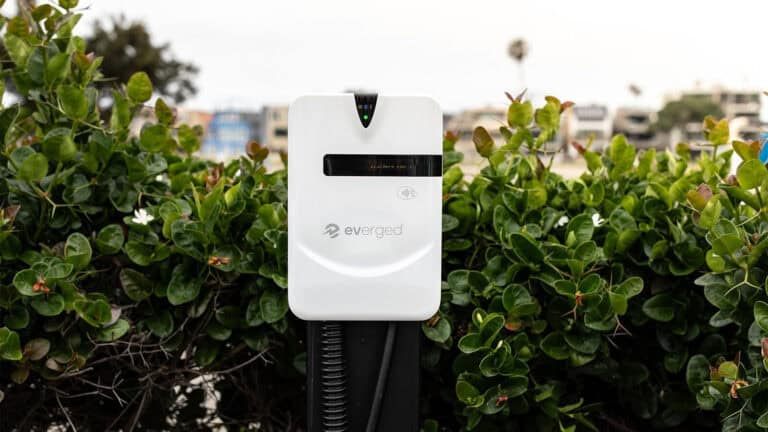

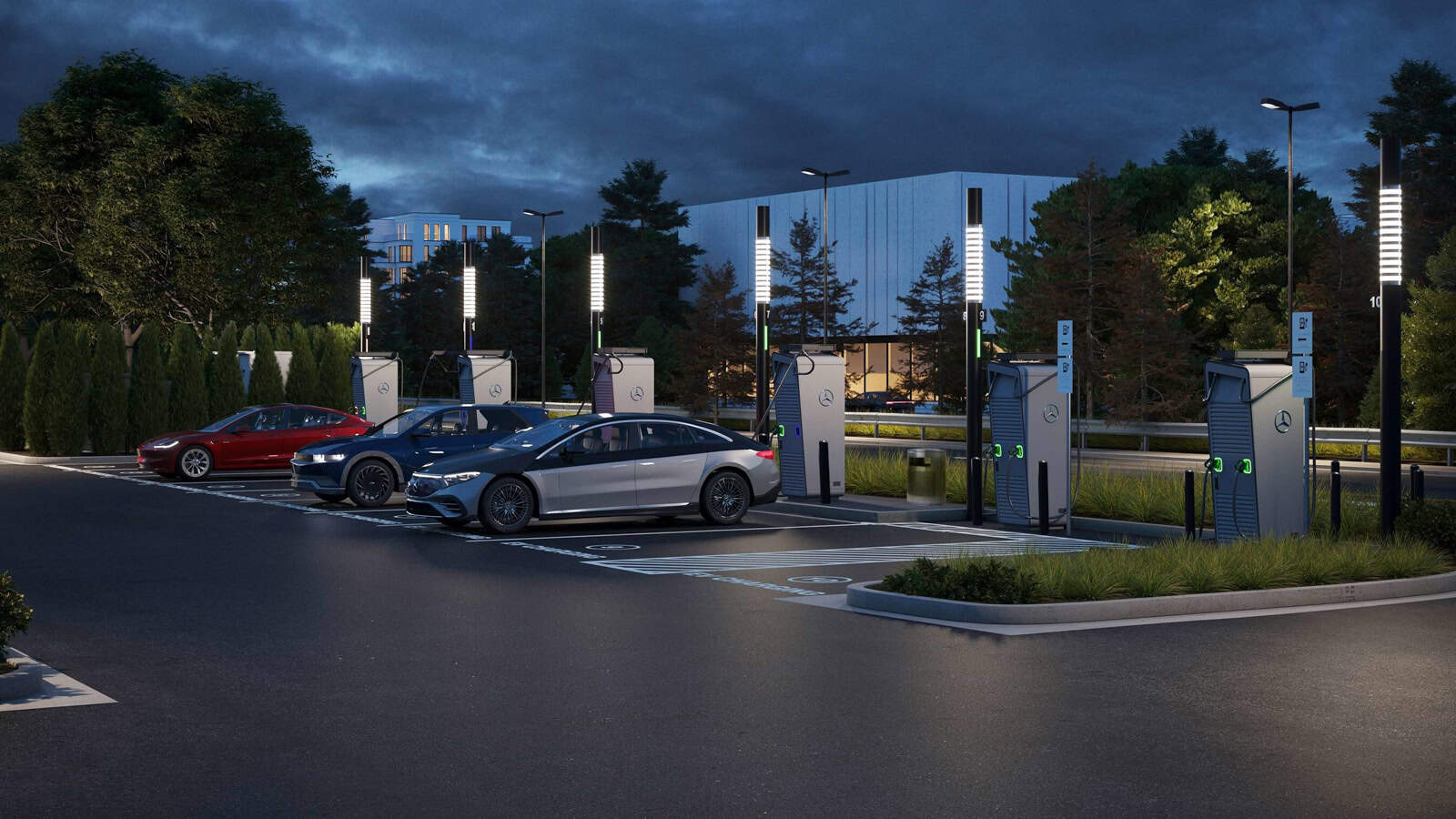



One Response